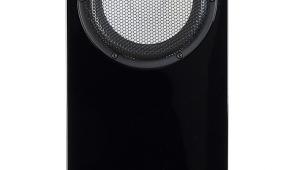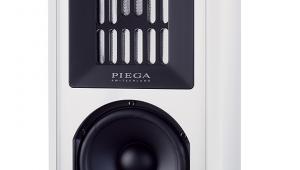Falcon Acoustics LS3/5a Loudspeaker

 An audio fantasy realised: the return of a bona fide, BBC-approved LS3/5a to match the original – Falcon Acoustics applies provenance and purism to the project
An audio fantasy realised: the return of a bona fide, BBC-approved LS3/5a to match the original – Falcon Acoustics applies provenance and purism to the project
Handing me a pair of 'new' LS3/5as always elicits mixed feelings. Part of me wants the speaker back in production so badly that I tend to go soft on the latest contender. My dark side says it's impossible without KEF drivers, but that was to overlook Falcon Acoustics' pedigree. This brand offers kits and drivers plus the reincarnated LS3/5a we have here, selling for £2350-£2500 per pair depending on finish. It also has a secret weapon in its gene pool: Malcolm Jones.
We know the LS3/5a became extinct around the turn of the century, when KEF ceased making the B110 mid/bass unit and T27 tweeter that BBC-licensed manufacturers were obliged to use. 'Facsimile' versions emerged to quench the thirst, using other drivers optimistically 'voiced' as best as possible to sound like the genuine article.
Sincere Flattery
Many came close, while other small two-ways with near-identical dimensions (not dubbed 'LS3/5a') attempted to recreate the LS3/5a sound while attending to its two worst limitations: maximum SPLs and bass extension. That said, they were different, with their own charms, but were no more like period LS3/5as than the current Fiat 500 is like its ancestor.
Unlike the rest of the post-2000 wannabees, the Falcon Acoustics model bears what are effectively 'reborn' drive units, because the company's lineage boasts a direct line to the original speaker. Here's where Falcon rewrites LS3/5a history, and as a result, surpasses other attempts at reviving this much-loved speaker.
Its founder, Malcolm Jones, started Falcon Acoustics Ltd in 1972, while still at KEF. He departed KEF in 1974, having just completed work on the milestone Reference Series 104, among other projects, to work full time at Falcon, serving as MD until 2009. His successor and current MD is Jerry Bloomfield.
Malcolm remains the single most important survivor of KEF's birth period because he was its first employee, having been hired by founder Raymond Cooke in 1961. In his capacity as Senior Development Engineer, Malcolm did most of the design and development of the B139, B200, B110, T15 and T27 drive units, and the systems that used them. As LS3/5a lovers know, the B110 and T27 formed the core of the speaker.

Having had my hands on over 50 pairs of assorted LS3/5as and would-be models, I must admit to a frisson of temporal displacement when I opened the box. Had it not been for the badge, I could have been whisked back to circa 1980, but with two exceptions and a third caveat: the sleek multi-way terminals and its superior standard of finish.
As for the caveat, Falcon has effectively eliminated comparison with LS3/5as made after the change to the spec in the late '80s. At the end of that decade, to improve consistency, the speaker's crossover and woofer were changed, the impedance dropped from 15 to 11ohm, and bi-wiring capability added. Falcon has returned to the 15ohm, single-wire form of the original here – something which every LS3/5a purist will applaud.
Arriving in a fine cherry finish, the review pair adheres to all of the original LS3/5a criteria. The grille is Tygan mesh while the drive units are the Falcon-made B110 and T27. As Malcolm developed them in the first place, as specified in the original 15ohm LS3/5a version designed by the BBC, I defy anyone to challenge their absolute legitimacy.
As watchmakers would say, these are true 'manufacture' speakers, meaning that the essential elements are made in-house. Both drive units are truly identical to the original LS3/5a drivers and the crossover matches the 15ohm BBC-specification FL6/23 filter, with the preferred transformer-style network.
Measuring the familiar 305x190x165mm (hwd) and weighing 5.35kgs each, the Falcon LS3/5as feature cabinets made of selected grade Baltic Birch ply with beech battens, internally damped, and offered in cherry or walnut as standard, with rosewood, burr walnut and yew as luxury options. These, too, are British-made to the BBC specification.
Falcon Acoustics' BBC-licensed LS3/5as are sold in matched pairs, and are supplied with an instruction manual, an individually-numbered Certificate of Authenticity and five-year guarantee. I hope the latter will be rarely needed, for LS3/5as, despite limited power handling and the existence of irresponsible head-bangers, are hard to blow up… though it's not impossible.
![]() Blast From&Hellip; The Present
Blast From&Hellip; The Present
Who knew what to expect? With both legacy 15ohm Rogers and 11ohm Spendors against which to compare these, I was immediately disoriented by a particularly uncanny, immediate sensation. It was something I'd only ever experienced once before in my entire half-century as an audiophile, when I heard a pair of expertly-modified Quad ESLs (now there's another classic begging for rebirth) which delivered far more bass and far more level than any stock pair could withstand.
























































